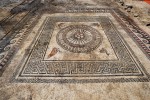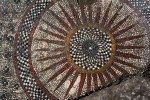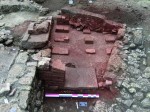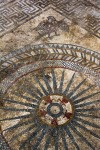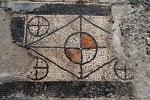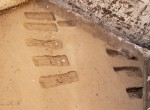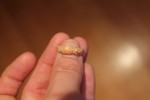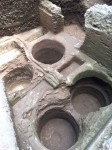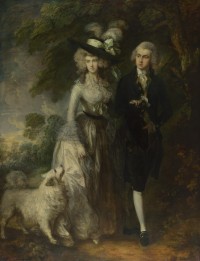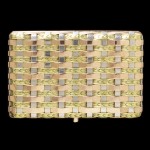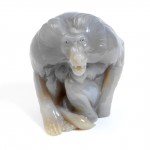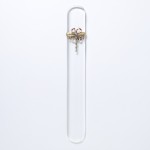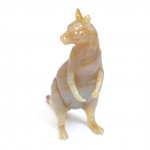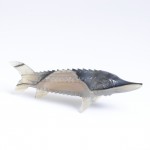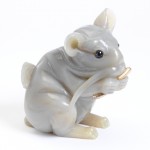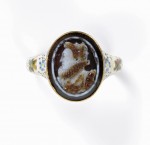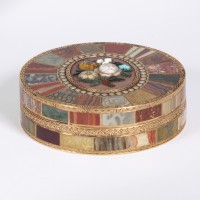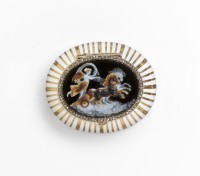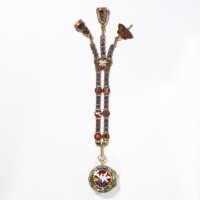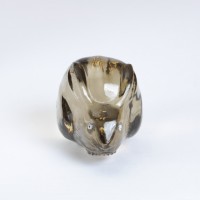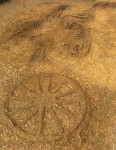 Archaeologists have discovered an extremely rare Iron Age horse and chariot burial in Pocklington, East Yorkshire. The site of a planned housing development on Burnby Lane has been excavated since 2014, and it soon became evident that these homes were going to be built on a major Iron Age burial ground. (I will update this story when the first new resident gets sucked into a television.) So far 75 square barrows and 142 individuals from the middle Iron Age Arras culture have been unearthed there.
Archaeologists have discovered an extremely rare Iron Age horse and chariot burial in Pocklington, East Yorkshire. The site of a planned housing development on Burnby Lane has been excavated since 2014, and it soon became evident that these homes were going to be built on a major Iron Age burial ground. (I will update this story when the first new resident gets sucked into a television.) So far 75 square barrows and 142 individuals from the middle Iron Age Arras culture have been unearthed there.
 The Burnby Lane burial graves have yielded remarkable finds before — a man buried on his shield, jewelry, spears, a sword, pots — but the remains of a chariot and two articulated horse skeletons are nothing short of sensational. Only 26 chariot burials have ever been found in the UK (most of them in East Yorkshire) and the last one was discovered two centuries ago. That makes the Pocklington chariot burial the only one of its kind to be excavated with modern archaeological methods, and it’s the only one to include horse burials.
The Burnby Lane burial graves have yielded remarkable finds before — a man buried on his shield, jewelry, spears, a sword, pots — but the remains of a chariot and two articulated horse skeletons are nothing short of sensational. Only 26 chariot burials have ever been found in the UK (most of them in East Yorkshire) and the last one was discovered two centuries ago. That makes the Pocklington chariot burial the only one of its kind to be excavated with modern archaeological methods, and it’s the only one to include horse burials.
The Pocklington chariot burial, excavated over the past two months, was the final resting place of an upper-class Iron Age Briton – probably a warrior – who lived in the third or fourth century BC. It is possible that he was a member of an ancient British tribe called the Parisi (or their ancestors) – a culture related to other Iron Age peoples in Northern France.
Excavating his grave, archaeologists from a Yorkshire-based company MAP Archaeological Practice – [sic] have found the stain ‘imprints’ left in the ground by the rotted wood of the 12 spokes of one of the chariot’s wheels; the iron tyre (which would have gone round that wheel); the stain imprint of the chariot’s central timber pole (which connected the vehicle to the two horses pulling it); the stain imprint of the box-shaped compartment that the driver (and potentially one companion) stood in; the two horses used to pull the vehicle; the bridle bit; the iron nave hoop band (which went round the axle); and the remains of the driver himself.
The only missing element (almost certainly destroyed by mediaeval ploughing) is the second wheel.
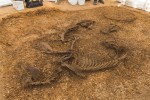 The chariot and horses were found in the last square barrow at the outer edge of the cemetery. It’s a hugely lucky break that it and the other burials in the cemetery survived the millennia. The agricultural work that may be responsible for the loss of the second wheel does not seem to have continued in that field. The neighboring field was extensively ploughed and farmed, but the archaeological gods must have been looking out for the Arras culture’s dead because the land was dedicated to grazing and pasture for hundreds of years, preserving its ancient subterranean burial ground.
The chariot and horses were found in the last square barrow at the outer edge of the cemetery. It’s a hugely lucky break that it and the other burials in the cemetery survived the millennia. The agricultural work that may be responsible for the loss of the second wheel does not seem to have continued in that field. The neighboring field was extensively ploughed and farmed, but the archaeological gods must have been looking out for the Arras culture’s dead because the land was dedicated to grazing and pasture for hundreds of years, preserving its ancient subterranean burial ground.
Researchers will now study any DNA they are able to extract from the remains of the chariot burial and some of the other remains found in the burial ground. They hope to confirm the chariot driver’s gender, health and, thanks to stable isotope analysis, his place of origin.
 This burial and some of the other highly significant graves will give historians a unique new perspective into the Arras culture. In addition to the warrior buried strapped to his shield, there’s a mysterious man who died from violent trauma inflicted by objects both blunt and sharp and was buried face down much deeper than usual. Archaeologists think he may have been an enemy warrior and was buried in such a manner as to prevent his rising from the grave to take his revenge on his killers. Then there’s the man who was buried honorably with his sword and was then ritually speared. Men, perhaps his fellow warriors, thrust six spears into his body, one into his groin. When his grave was filled and mounded over with earth, the spears were still in his body. Very few other examples of this unusual ritual are known.
This burial and some of the other highly significant graves will give historians a unique new perspective into the Arras culture. In addition to the warrior buried strapped to his shield, there’s a mysterious man who died from violent trauma inflicted by objects both blunt and sharp and was buried face down much deeper than usual. Archaeologists think he may have been an enemy warrior and was buried in such a manner as to prevent his rising from the grave to take his revenge on his killers. Then there’s the man who was buried honorably with his sword and was then ritually speared. Men, perhaps his fellow warriors, thrust six spears into his body, one into his groin. When his grave was filled and mounded over with earth, the spears were still in his body. Very few other examples of this unusual ritual are known.
“This spectacular group of graves is yielding extremely important new information about Iron Age life and culture. It is one of the most significant Iron Age funerary complexes discovered in Britain over the past half-century,” said one of the archaeologists involved in the project, Dr Peter Halkon of the University of Hull.



